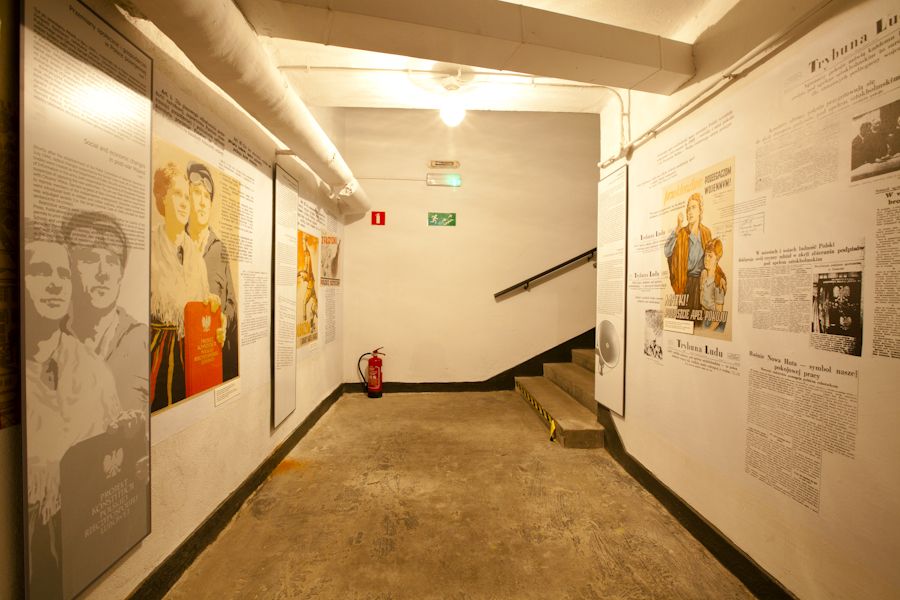Shortly after the establishment of the Polish Committee of National Liberation in July 1944, radical changes supported by the Soviet Union took off in Poland. Such bodies were created as the Department of Public Security and the Main Directorate of Information in the army, both responsible for repressions of thousands of people suspected of opposing the new authorities. The pre-war State Police was replaced with Citizens’ Militia. Decrees targeted at Nazi criminals were used on equal terms to repress members of the independence underground. Draconian criminal laws were introduced both in military and civilian judiciary, where capital punishment was adjudged lavishly (i.e. the Small Criminal Code of 1946 provided for death sentence for 14 crimes).
Restrictive actions were undertaken by the Central Office for Control of the Press, Publications and Entertainment who was a monopolist in terms of issuing permits to print magazines and books, and controlling the communicated content. Schools and universities were being stripped of all contents inconsistent with the dominant Marxist-Leninist ideology, while in public life the Soviet version of “socialism” was aggressively promoted. Also the Church was attacked. It was perceived as the main stronghold of resistance after independent organisations and armed troops opposing the authorities were liquidated.
The situation in agriculture has changed due to the decree on agricultural reform which definitely reshaped the ownership structure in the country and led to the dawn of landed gentry. Also industry could not avoid changes – major part thereof was nationalised. Moreover, the authorities carried out an action that came down in history as “the battle for trade”. Private property in wholesale and retail was virtually eradicated. Favourable conditions for nationalisation were secured by an act introduced by the authorities that provided for 5 years of imprisonment and high fines for people who bought, gathered or hid goods, as well as by the activity of the Special Committee for Fighting Corrupt Practices and Economic Sabotage, authorised to send citizens, under an administrative procedure, to work camps for “speculation”.
In 1950, communist authorities, encouraged by the success of the post-war Plan of Reconstructing the Economy (called the “three-year plan”), started to pursue the “six-year plan of building the foundations of socialism in Poland”. As a result thereof, numerous industrial units emerged, agriculture was partially collectivised and, due to labour migrations, the number of city inhabitants rose significantly. The flag investment was Nowa Huta – a city constructed from scratch and an enormous metallurgical plant. The post-war changes were crowned with the constitution introduced in 1952 which claimed that power in Poland “belongs to the working people of town and country”, “the power of capitalists and landlords has been overthrown” and the state’s official name is the Polish People’s Republic.


